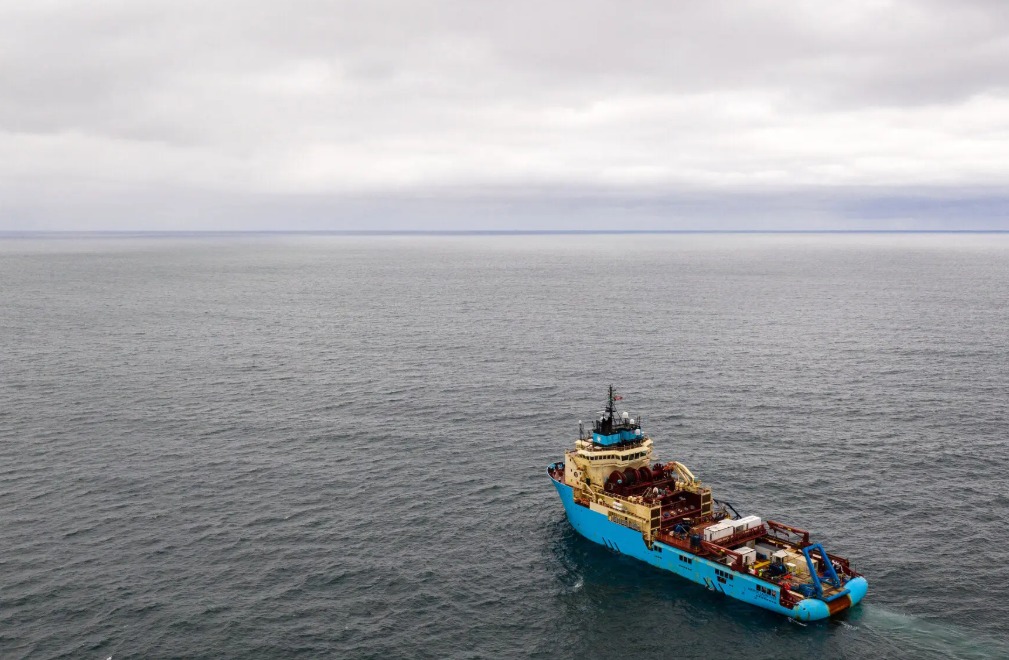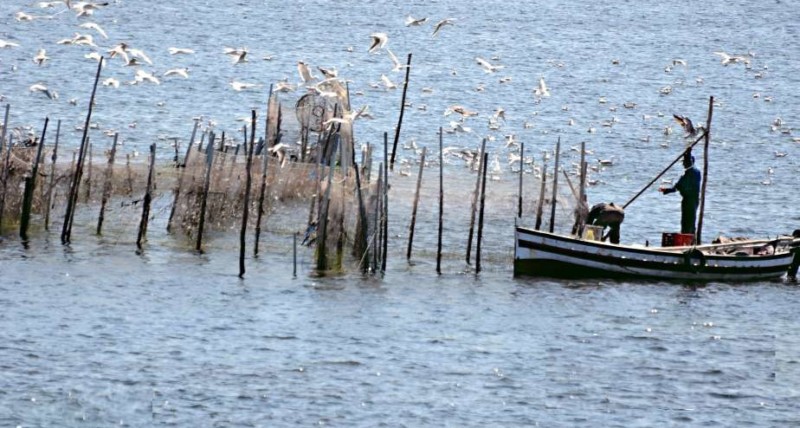A new decree pits the United States against the rest of the world over the issue of who can exploit mineral resources in shared waters.
President Trump has ordered the U.S. government to take a significant step toward the exploitation of vast areas of the ocean floor, a decision opposed by almost all other countries, who view international waters as off-limits for such industrial activity. The decree, signed on Thursday, would bypass a decades-old treaty ratified by all major coastal nations except the United States. This is the latest example of the Trump administration’s disregard for international institutions and is likely to provoke an outcry from both America’s rivals and allies.
The decree « establishes the United States as a global leader in the exploration and mining development of the ocean floor, both within and outside national jurisdiction, » according to a statement released by the White House.
Trump’s decree instructs the National Oceanic and Atmospheric Administration (NOAA) to accelerate the issuance of permits for mining companies in both international and U.S. territorial waters.
Certain parts of the ocean floor are covered in potato-sized nodules containing valuable minerals like nickel, cobalt, and manganese, which are essential for advanced technologies that the United States considers crucial to its economic and military security, but whose supply chains are increasingly controlled by China.
Treasure at the Ocean Floor
No large-scale deep-sea mining has ever taken place. The technological hurdles are high, and environmental consequences raise serious concerns.
As a result, in the 1990s, most countries agreed to join an independent international authority governing the mining of the ocean floor in international waters. Because the U.S. is not a signatory, the Trump administration is relying on a little-known 1980 law that allows the federal government to issue permits for deep-sea mining in international waters.
Many countries are eager to see deep-sea mining become a reality. However, the prevailing consensus has been that economic imperatives should not outweigh the risk that mining could harm the fishing industry and ocean food chains, or affect the ocean’s crucial role in absorbing carbon dioxide from the atmosphere, which warms the planet.
Previous Coverage of Deep-Sea Mining

Trump’s Pivot on Deep-Sea Mining Sparks Global Reproach
March 30, 2025

The Fight for Leadership of the Seabed Authority Turns Sour
July 4, 2024
Trump’s order follows years of delays at the International Seabed Authority (ISA) in setting up a regulatory framework for deep-sea mining. The authority still has not approved a set of rules.
The decree could pave the way for the Metals Company, a major deep-sea mining firm, to receive an expedited permit from NOAA to begin active mining for the first time. The publicly traded company, based in Vancouver, Canada, revealed in March that it would apply to the Trump administration, through a U.S. subsidiary, for permission to mine in international waters. The company has already spent over $500 million on exploration.
“We have a vessel ready for production,” said Gerard Barron, CEO of the company, in an interview on Thursday. “We have a means to process the materials in an allied, friendly country. We just need the permit to allow us to start.”
Anticipating that mining would eventually be authorized, companies like his have invested heavily in developing technologies to mine the ocean floor. This includes ships equipped with enormous claws that would extend to the ocean floor, as well as autonomous vehicles attached to gargantuan vacuum cleaners that would scour the seabed.
Some analysts have questioned the need to rush into deep-sea mining, given that there is currently an abundance of nickel and cobalt from traditional mining. Additionally, electric vehicle battery manufacturers, a key market for these metals, are moving toward battery designs that rely on other elements.
Nevertheless, projections for future demand for metals remain generally high. And the escalation of Trump’s trade war with China threatens to limit American access to some of these critical minerals, which also include rare earth elements found in trace amounts in ocean floor nodules.
The U.S. Geological Survey has estimated that the nodules from just one region of the Eastern Pacific, known as the Clarion-Clipperton Zone, contain more nickel, cobalt, and manganese than all known terrestrial reserves combined. This zone, located in the open ocean between Mexico and Hawaii, is about half the size of the continental United States.
The Metals Company’s contract sites are in the Clarion-Clipperton Zone, where the ocean is about 2.5 miles deep on average. The company would be the first to apply for a mining permit under the 1980 law.
Barron blamed an “environmentalist takeover” of the ISA for its delays in establishing a regulation his company could comply with, leading him to turn directly to the U.S. government instead.
In a statement provided to the New York Times last month, a NOAA spokesperson, Maureen O’Leary, said that the existing process under U.S. law includes “a thorough environmental impact review, interagency consultations, and the opportunity for public comments.”

Under the 1994 United Nations Convention on the Law of the Sea, nations have exclusive economic rights over waters within 200 nautical miles of their coastlines, but international waters fall under the jurisdiction of the ISA. Since the law of the sea came into effect, the State Department has sent representatives to meetings at the headquarters of the International Seabed Authority in Kingston, Jamaica, creating the impression that the United States intended to honor the treaty’s terms, even though the Senate has never officially ratified it.
More than 30 countries have called for a delay or moratorium on the start of deep-sea mining. A range of automakers and tech companies, including BMW, Volkswagen, Volvo, Apple, Google, and Samsung, have committed not to use minerals from the ocean floor. U.S. Representative Ed Case of Hawaii introduced the U.S. Deep-Sea Protection Act in January, which would prevent NOAA from issuing licenses or permits for deep-sea mining activities.
ISA negotiators have spent more than a decade drafting a set of mining rules, which would cover everything from environmental regulations to royalty payments. Despite promises to finalize them by this year, it seemed unlikely that negotiators would meet this deadline.
Nevertheless, other major world powers, including China, Russia, India, and several European countries – which have generally supported swift action toward mining in international waters – have opposed the Metals Company’s plan to obtain a permit from the U.S. government.
Much of the hesitation about exploiting the ocean floor stems from the little research that has been done by scientists. The polymetallic nodules in the Clarion-Clipperton Zone, for example, are found in a cold, still, and dark world inhabited by organisms that marine biologists have only encountered on infrequent missions.
“We think about half of the species that live in this area depend on the nodules for part of their development,” said Matthew Gianni, co-founder of the Deep Sea Conservation Coalition.
The mining methods that companies propose to implement would essentially destroy these ecosystems, Gianni said, and sediment plumes caused by the mining could spread over vast areas, suffocating other areas.
The Metals Company, which has conducted its own environmental research for a decade, has said these concerns are exaggerated. “We believe we have enough knowledge to start and prove we can manage the environmental risks,” Barron said in a press release last month.

Reaching the Ocean Depths
Reaching the ocean’s depths is costly and technologically complex, much like traveling to another planet. “Humanity has only scratched the surface,” said Beth Orcutt, a microbiologist at the Bigelow Laboratory for Ocean Sciences. The deep ocean covers about 70% of the Earth.
Disturbing the ecosystems of the deep sea, no matter how remote they seem, could have far-reaching effects.
“The ecosystems themselves are really important in the large-scale global cycles that allow the ocean to be productive and create fish and shellfish and feed people,” said Lisa Levin, an oceanographer at the Scripps Institution of Oceanography. “And all of these ecosystems are interconnected, so if you destroy one, we probably don’t even understand what happens to the others in many ways.”




